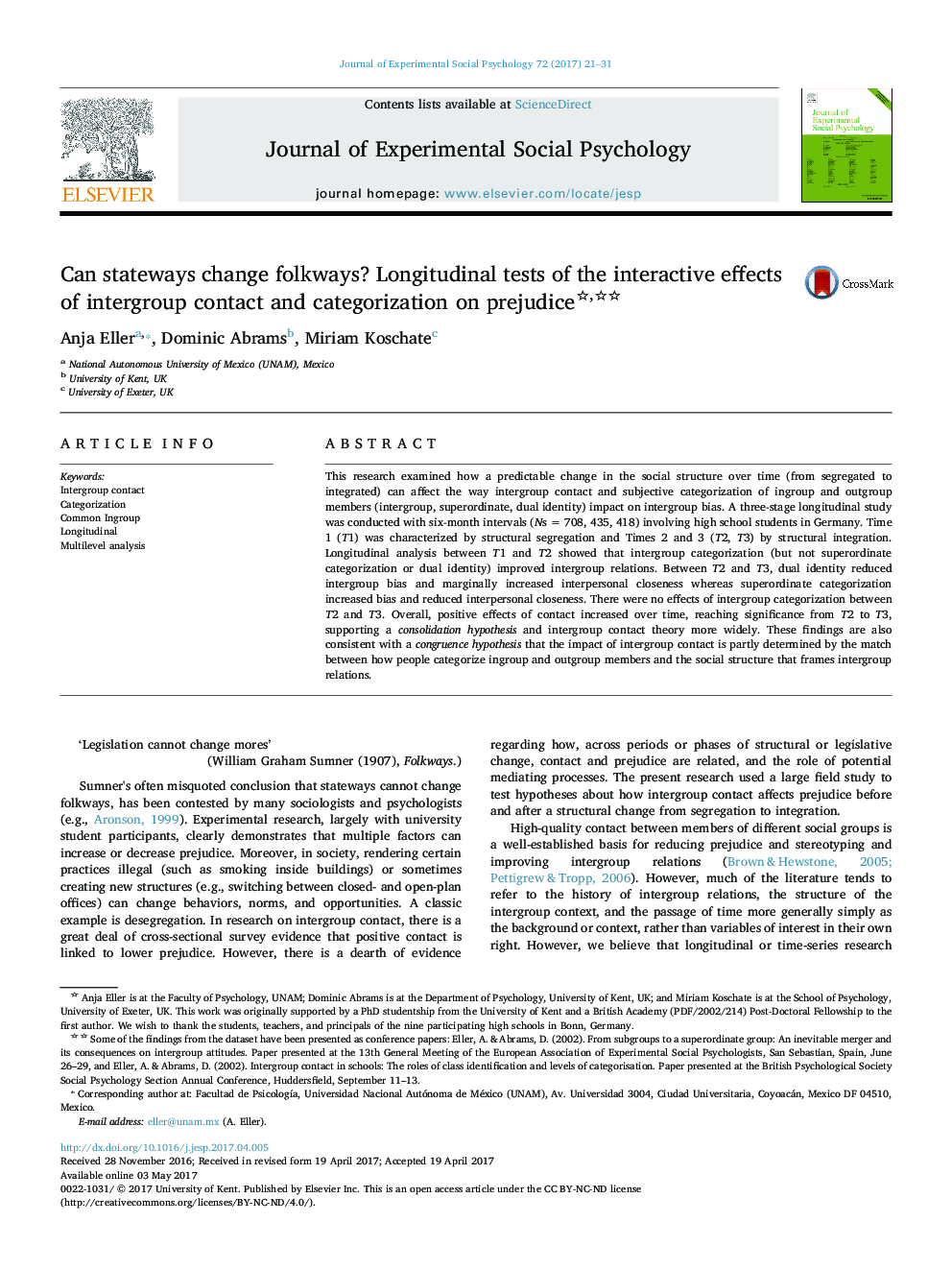| کد مقاله | کد نشریه | سال انتشار | مقاله انگلیسی | نسخه تمام متن |
|---|---|---|---|---|
| 5045665 | 1475851 | 2017 | 11 صفحه PDF | دانلود رایگان |
- Intergroup contact is constrained by structure (integration vs. segregation).
- Subjective categorization during contact can be at different levels of inclusion.
- We test effects of structure and categorization during contact on intergroup bias.
- There are three waves of data: segregation (Time 1), then integration (T2, T3).
- The match between social structure and subjective categorization impacts on bias.
This research examined how a predictable change in the social structure over time (from segregated to integrated) can affect the way intergroup contact and subjective categorization of ingroup and outgroup members (intergroup, superordinate, dual identity) impact on intergroup bias. A three-stage longitudinal study was conducted with six-month intervals (Ns = 708, 435, 418) involving high school students in Germany. Time 1 (T1) was characterized by structural segregation and Times 2 and 3 (T2, T3) by structural integration. Longitudinal analysis between T1 and T2 showed that intergroup categorization (but not superordinate categorization or dual identity) improved intergroup relations. Between T2 and T3, dual identity reduced intergroup bias and marginally increased interpersonal closeness whereas superordinate categorization increased bias and reduced interpersonal closeness. There were no effects of intergroup categorization between T2 and T3. Overall, positive effects of contact increased over time, reaching significance from T2 to T3, supporting a consolidation hypothesis and intergroup contact theory more widely. These findings are also consistent with a congruence hypothesis that the impact of intergroup contact is partly determined by the match between how people categorize ingroup and outgroup members and the social structure that frames intergroup relations.
Journal: Journal of Experimental Social Psychology - Volume 72, September 2017, Pages 21-31
